Since we are in the same country as Jana after traveling separately for 10 months, a small trip together is required. We want to take a tour in North Vietnam, but where? We hear echoes of Ha Long Bay and Sapa, two huge tourist traps that, in addition of beeing so crowded, deteriorate nature by polluting it through the mass of visitors and the mismanagement of this trade … we are not very motivated and are happy when Jana invites us to visit the area of Ha Giang, very up North of Vietnam, between valleys and steep mountains.
We take the Danang train to Hanoi (15 hours) and spend a day in the capital. After Saigon, we were afraid of finding ourselves in pollution, noise and big city. However, as soon as we arrive, we discover a romantic city, with trees in the streets, lakes everywhere, old houses in ocher colors, small local cafes, welcoming and neat, hidden in nooks of alleys. Jana takes us to places advised by her friends, we are not disappointed! We even taste a specialty from here, a coffee with egg!
The next day, we take the bus to Ha Giang, 7 hours driving from here. We find ourselves in a sort of comfortable bed-seat, but which does not allow us to see much at the road and therefore give a little stomach ache as soon as we enter the winding roads. The Vietnamese, so accustomed to scooters, do not miss the chance to have nausea and when one gets into it, it makes domino effect!
So we arrive late at night in Ha Giang and discover the next morning a city at the foot of green mountains that call us by their so steep aspect. We rent semi-automatic scooters, and go for a loop in the mountains of 350km, which we will do in 4 days. We go up a lot first and are surprised by the rain; we did not expect that we could get cold in Vietnam !! So we are happy to have our rain jacket but shiver a little in our wet clothes. Fortunately, we find a good hot chocolate at the top of a magnificent point of view.
From here on, the beautiful and incredible landscapes are linked without us having time to recover from our emotions from one valley to another. Sometimes we are towards steep mountains, sometimes we dive into the green scenery of a valley full of corn where a river meanders.
We do not go fast at all with our motorbikes and it takes us the all day to travel 70 to 100 km. We are even quite tired from the trip but we relativise quickly when we meet local people. They are minorities who have their own language and traditions. Women are dressed with colorful skirts and wear their babies on their backs with a special fabric. When they have no child in the back, it’s a hand-woven hood filled with grasses or other food that they went to pick up in the mountains.
We also meet very young children who keep buffaloes or goats. They lead them on the roads or in the fields and spend the day with them. Sometimes they take their 3 years old little brother or sister with them.
Some other times, when they are not with the animals, the children also wear hoods and pick up grasses. They can walk for a long distance which amazes us. We meet them in the middle of nowhere, without any road or house at kms around, who walk and go up the mountain.
The men themselves are dressed in black with a berret, black too. They work just as hard as women. The way of life of these populations impresses us and leaves us very admirative of their simplicity and strong will. Sometimes we meet a little granny carrying heavy loads on her back and who is heading we don’t know where, but far away. We are then a little ashamed to pass by her side quietly with our scooter that makes noise and pollutes; we’re just here to visit, it’s not even like we have something to do where we go. Yet, people are always smiling, children seek contact and do not seem to feel bad about their life.
Corn and rice are the main crops here. We wonder how they manage to plant their corn on such steep slopes but we see it everywhere. When it comes to rice, the plantations they have planted in the mountains blend so well with nature that each new landscape is a true artistic tableau. In Europe, we have never seen fields of agriculture that respected both the landscape and the beauty of nature so well.
We sleep in small inns or hotels and meet other travelers who had the same idea like us. Ha Giang may be the least tourist region of Vietnam, there is still a banch of them! We go to a beautiful waterfall in one of the valley to enjoy the cool water. Suddenly, a dozen children come running and shouting. They take off their clothes like tornadoes and throw themselves into the water. Here they are climbing with confidence and agility on the slippery rock of the edge of the waterfall, where a moment earlier we stood carefully not to slip! They jump from above, jump again, swim, laugh and play. They are real little guardians of the waterfall, we are amazed to see how they blend and adapt to this environment that is theirs.
The 4th day, a difficult and well dented road makes us rejoice to return. On the road, we pass by our favorite place to drink a hot chocolate, and here we are already in Ha Giang! We take the bus the next day and arrive in the intense heat of Hanoi in the afternoon.
We have a day left to enjoy the cafes of this city and make a few short visits, not to melt between two fruit juice! In the evening, the train welcomes us with its berths and we leave for Hue. 4 days of transport trip to go to this beautiful region. A bit long but it was worth it!
The next day we are very tired because we did not sleep in the train. The energy returns for the evening because Alice and Jana have prepared a small concert for the Peaceful Bamboos. A very good meal is waiting for us there in honor of Jana’s departure, and a good night’s sleep in perspective, before heading back to Danang, to prepare our stuffs for the next destination, Japan!
Shocks, questions, anecdotes…:
- When we arrive in the village of Meo Vac, in the Ha Giang area, we are surprised to see for the second time a kind of radio tower with several speakers hung on it. We hear a Vietnamese speech, a man and a woman who talk constantly, interspersed sometimes with music. We ask what it is and we are told that it is government radio and that it goes three times a day. It reports news, agriculture reports, etc. Even if we do not understand what the radio says and that we do not understand everything what our interlocutor try to explain us because he does not speak very well English, we are shocked to understand that the inhabitants have the obligation to live with this radio in the ears every day; it makes us think of propaganda and we even feel like we are in the 1984 book. Apparently, these radios are in villages all over Vietnam.
- Signs on the houses with a pretty Indian woman who holds two ears of corn intrigue us. Jana looks on the internet and understands that an Indian company selling GMO seeds has managed to penetrate the seed trade here. The Vietnamese government apparently authorized the cultivation of GMOs in 2015 and even welcomed the companies by rewarding them for being protectors of nature and its good balance. We are a little frightened to see that these seeds have arrived in this remote region where people have been growing corn for so long, with varieties that are probably very adapted to these soils. In addition, we are outraged that the government can proudly bring these seeds of India under the glory of the green revolution, when we know that so many peasants have committed suicide in India, no longer able to pay the seeds over the years, and their soil deteriorated more and more because of all the pesticides they had to put … not to mention how much Vietnam suffered from the agent orange during the war and still today and surely for several generations, made by Monsanto that they adorn today with the honorary title of protector of nature …
- We stop once in a small village to get gas. An elderly woman with a small child comes to Mehdi and raises his sleeve. She laughingly shows the child the hairs on Mehdi’s forearm. It seems very odd to her. She lifts Alice’s sleeve and seems relieved to see that there is no hair on her forearms! Mehdi opens his jacket a bit and she sees his chest hair: she heads back and can not hide her astonishment! We all burst out laughing. The hairs are really a rare thing here.
- We often see a flock of children around women in the Ha Giang area. We wonder what access to contraception these families have and how this is perceived by their culture.
- From our arrival in Hanoi to the deepest village of Ha Giang, we see large wooden pipes in the shape of didgeridoo. We wonder if it is opium that men smoke in these pipes. A search on the internet tells us that it is tobacco that they smoke, but seeing how they look sometimes after smoking, we doubt that it is always and only tobacco.

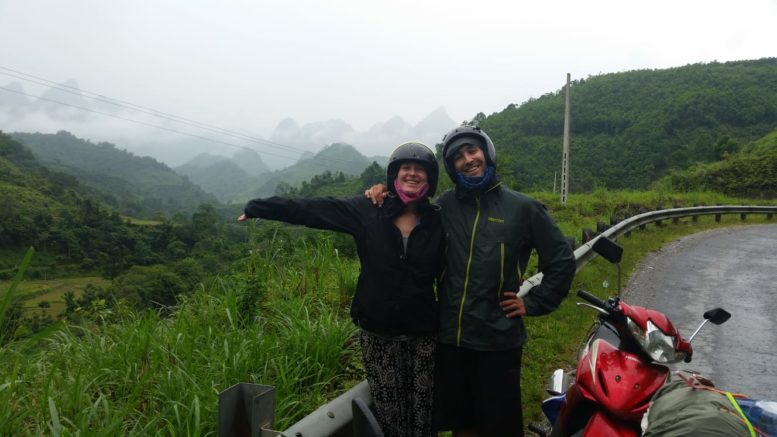
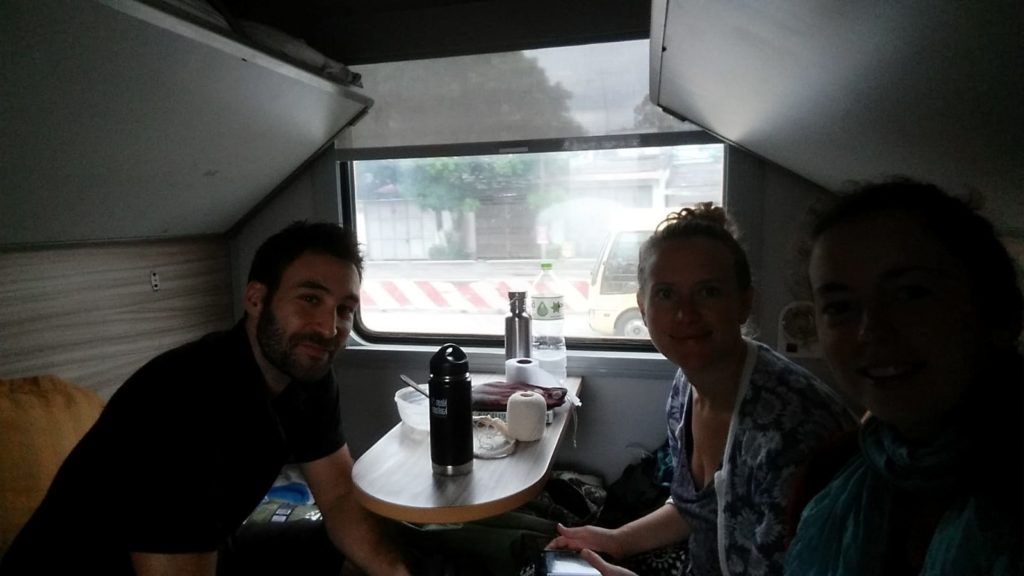
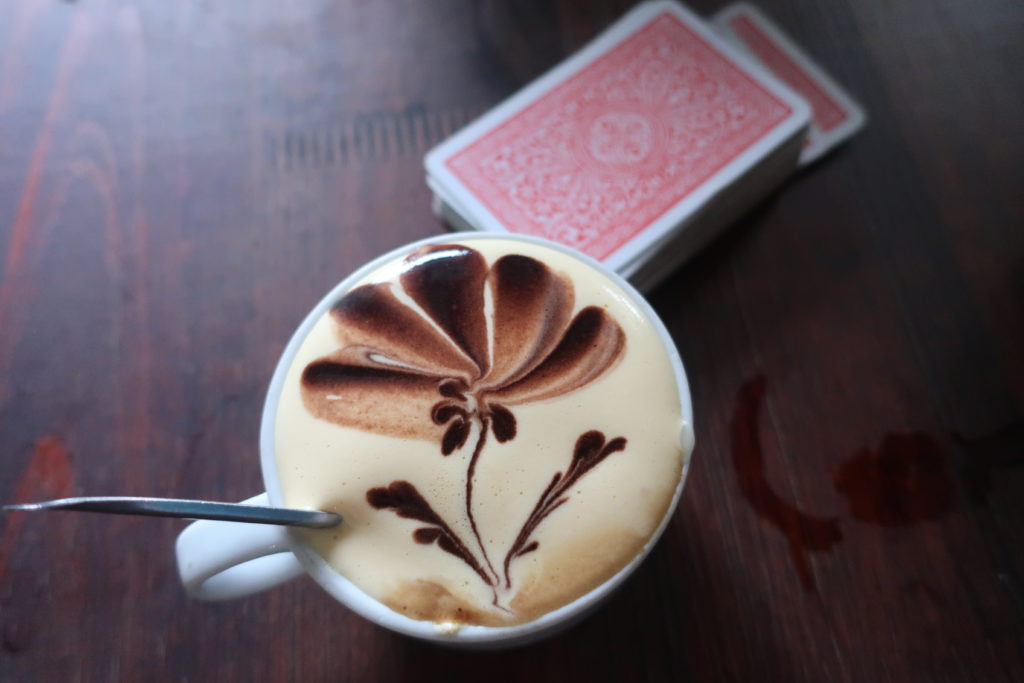
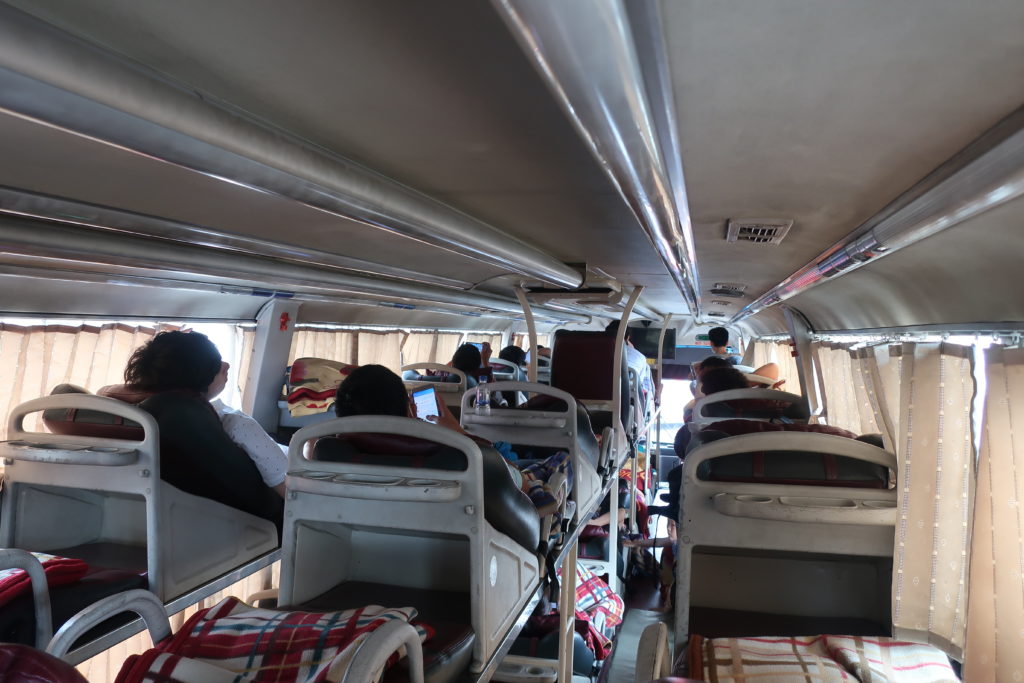
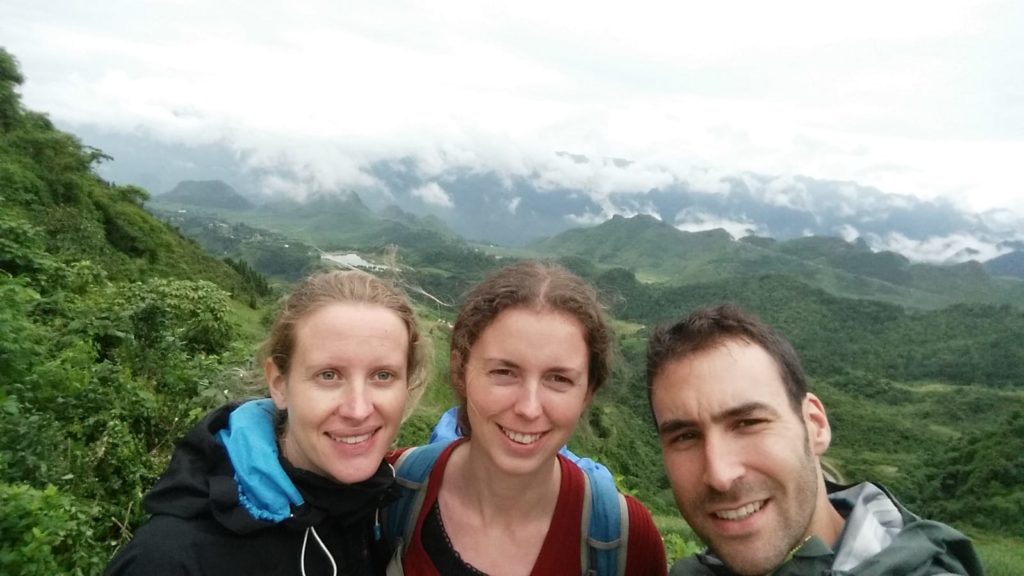
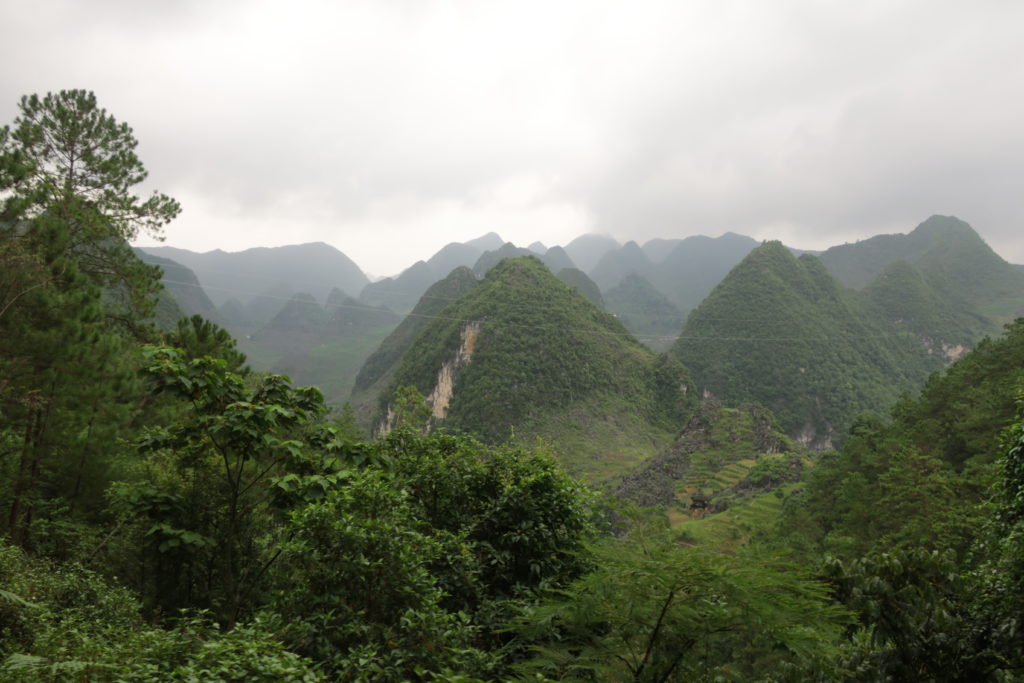
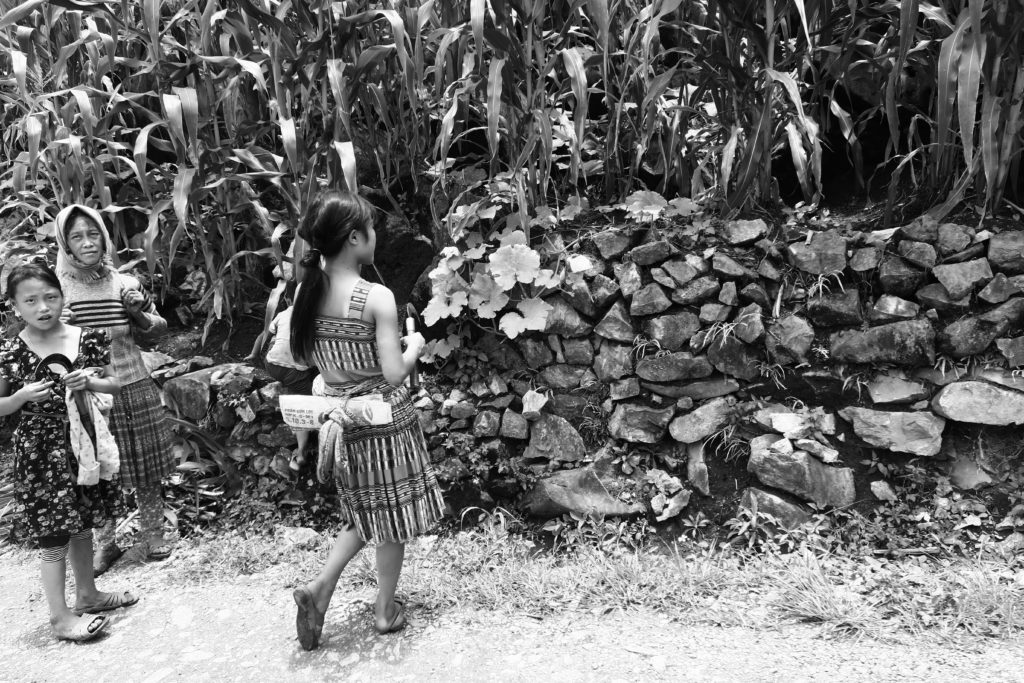
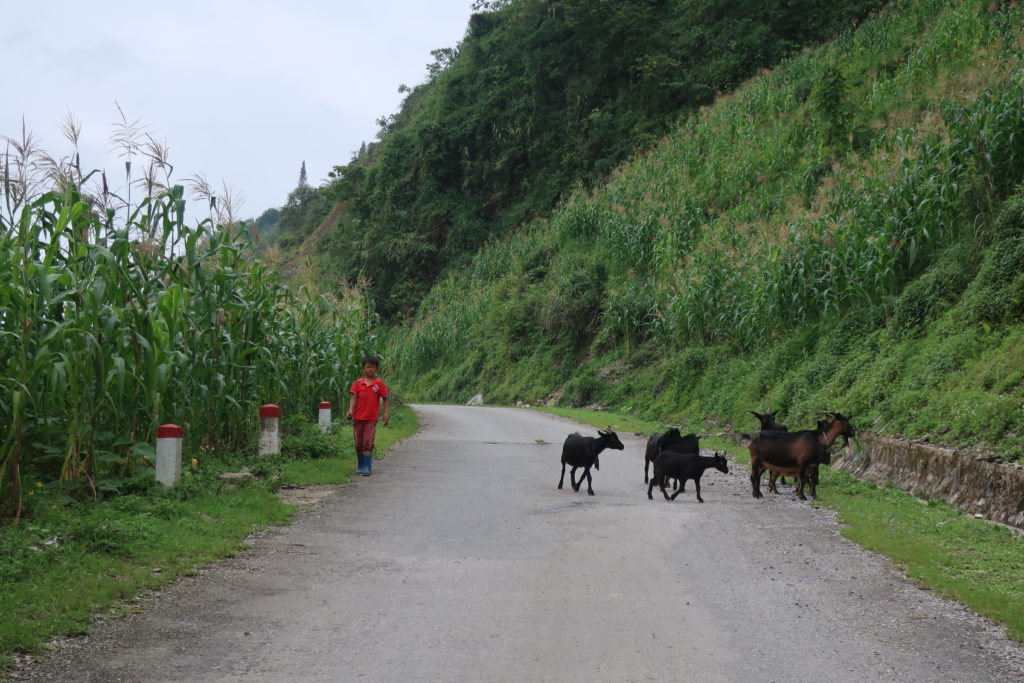
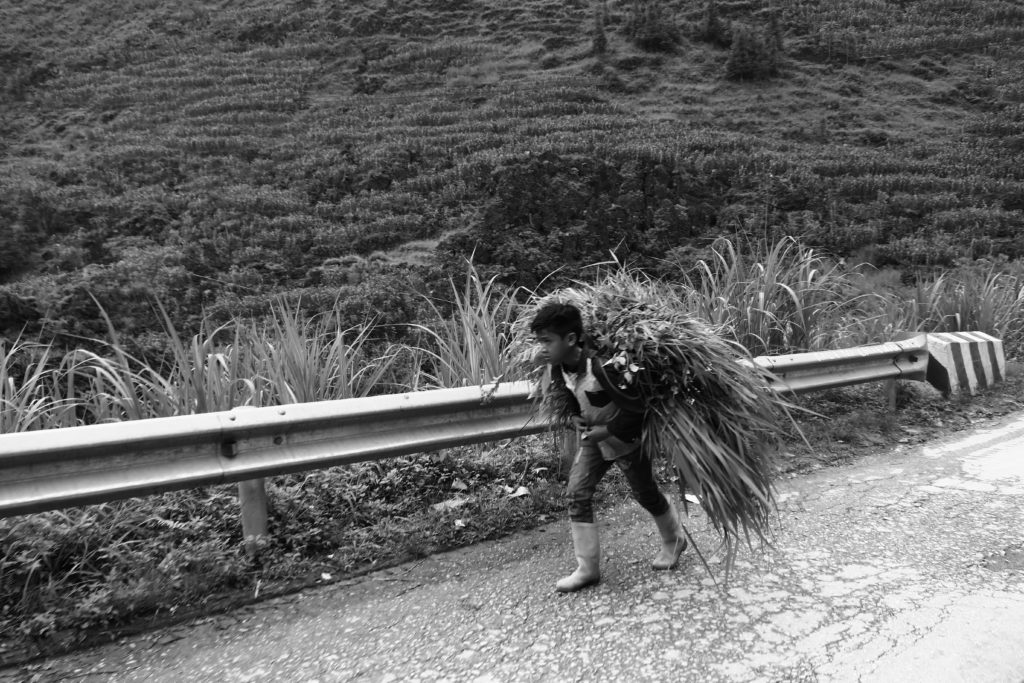
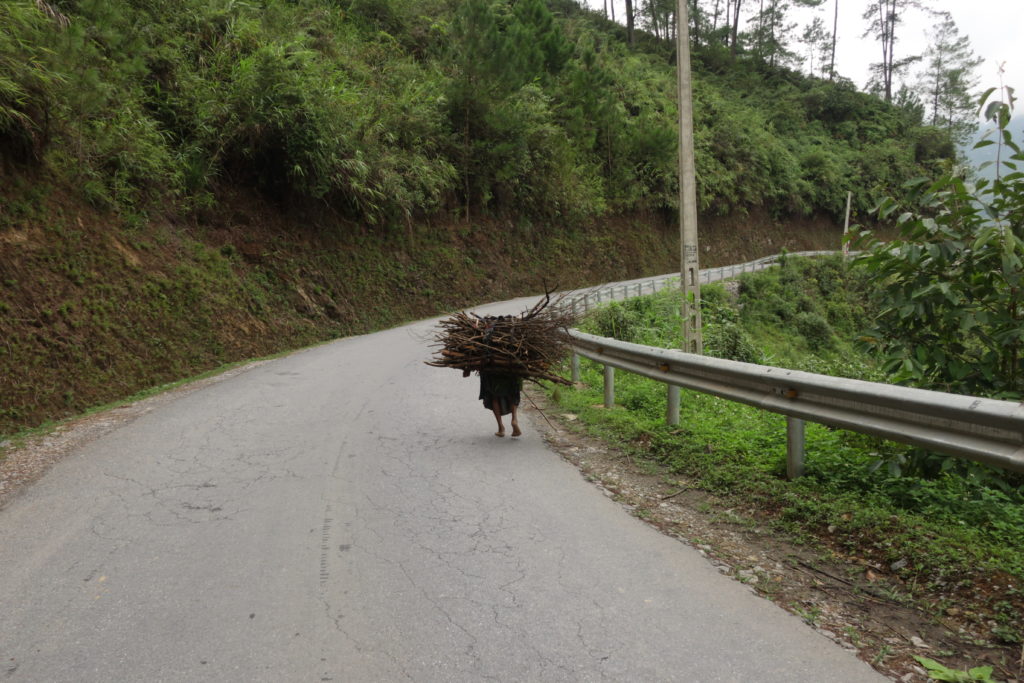
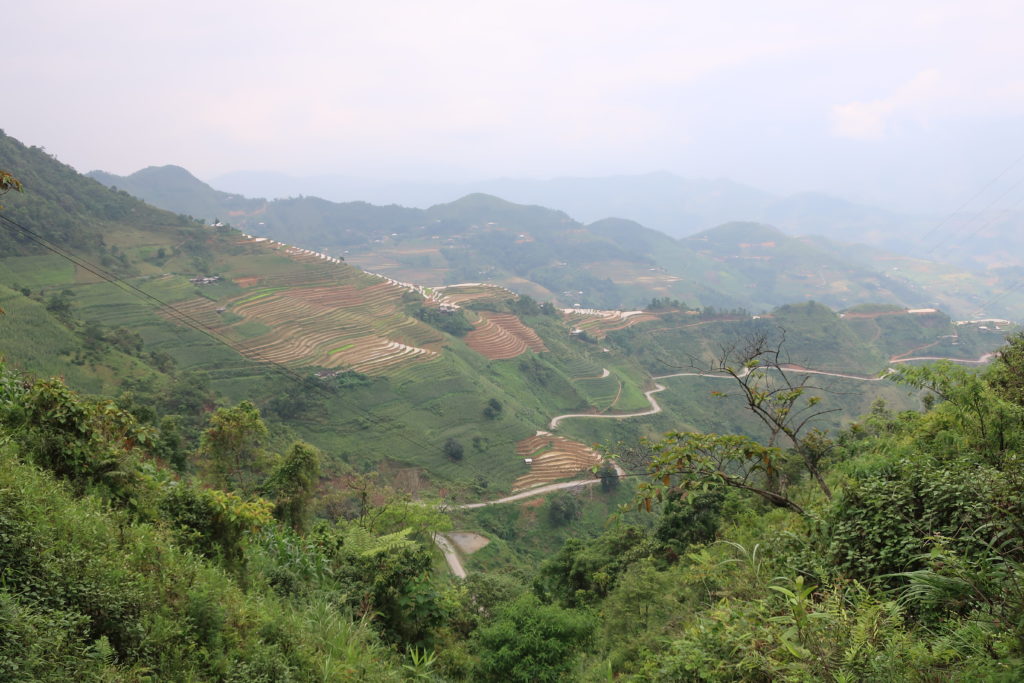
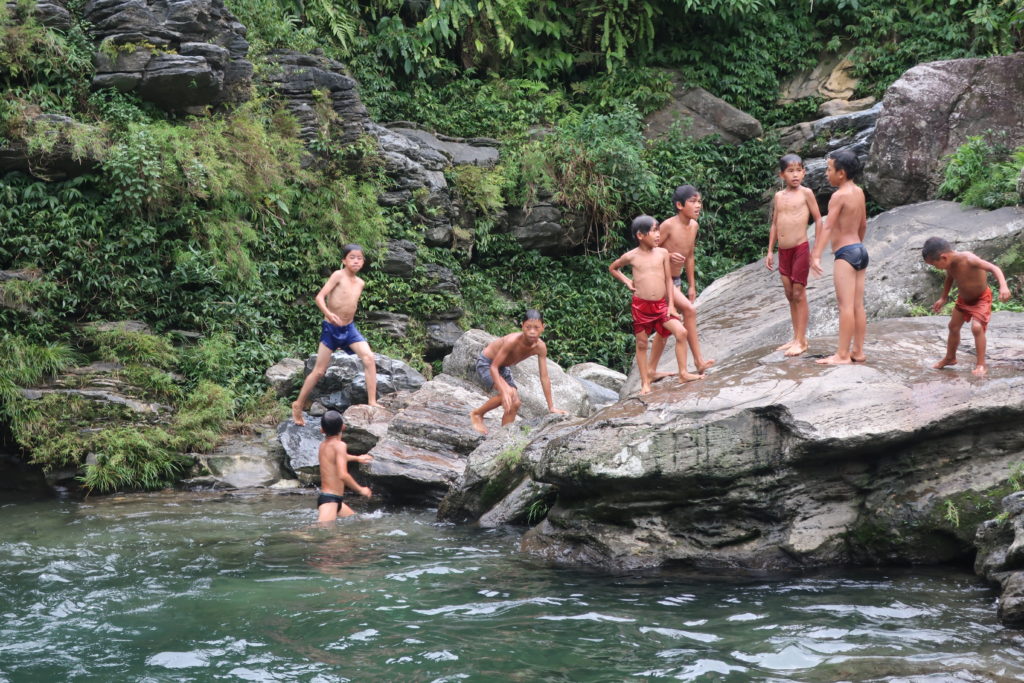
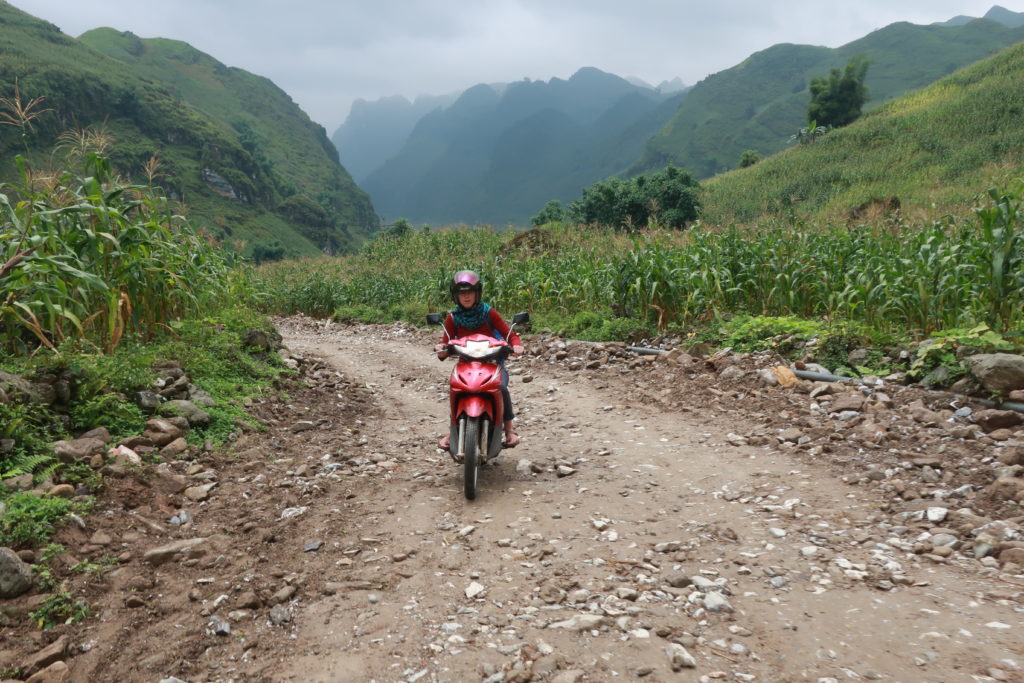
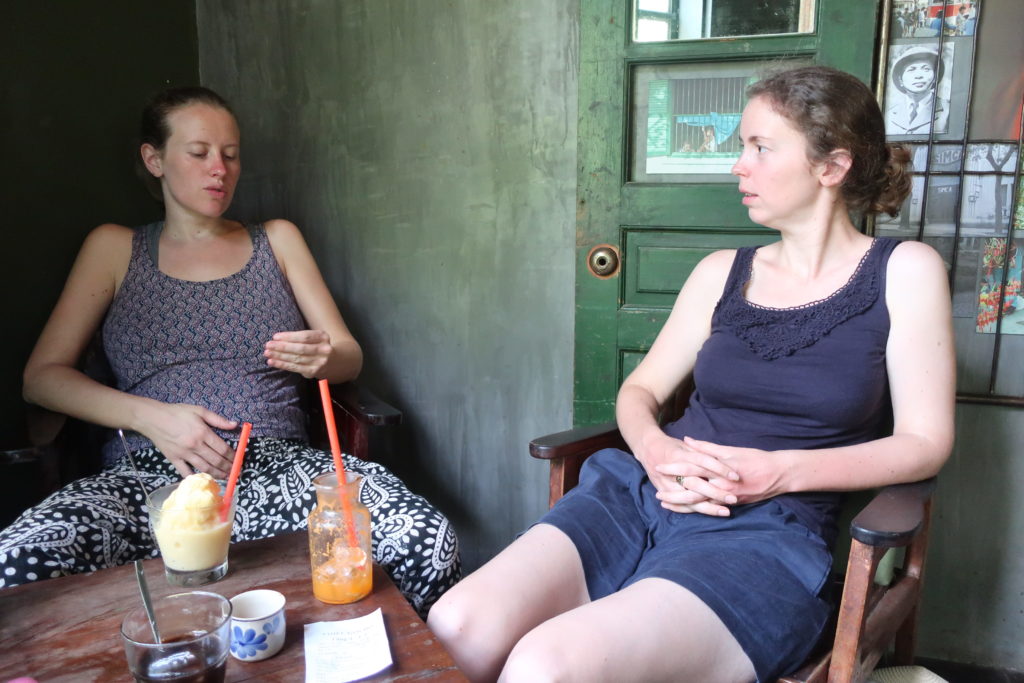
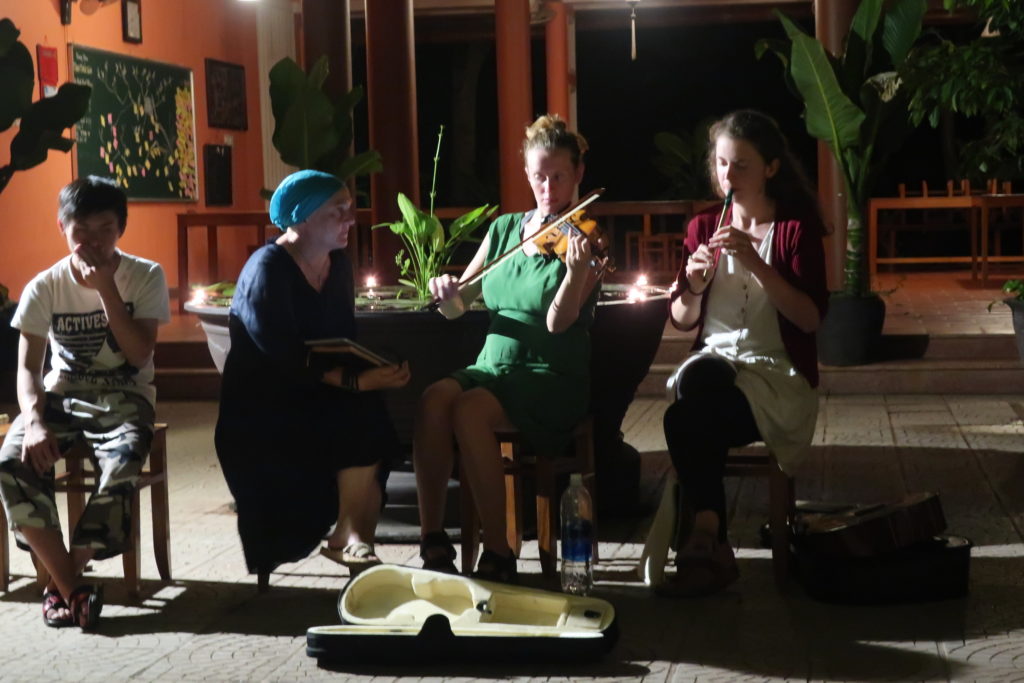
encore et encore de superbes paysages.. Parfait et je continue de voyager..Contente de vous lire, vous allez bien et profitez un max.. de tout GENIAL…
Ici tout est ok, le temps est super et chaud tous ces jours. Balades au bord du lac, en forêt ect..
Je fais les valises , on part pour le Portugal 3 semaines..A bientôt et je vous souhaite le meilleur .
Marie- José Bis
je suis toujours heureuse de vous suivre dans cette magnifique aventure et admire votre soif de découvrir ces contrées lointaines !
A Villars il fait aussi entre 25 -30° ces jours et nous avons cueillis les cerises !
Bonne continuation, je vous ambrasse